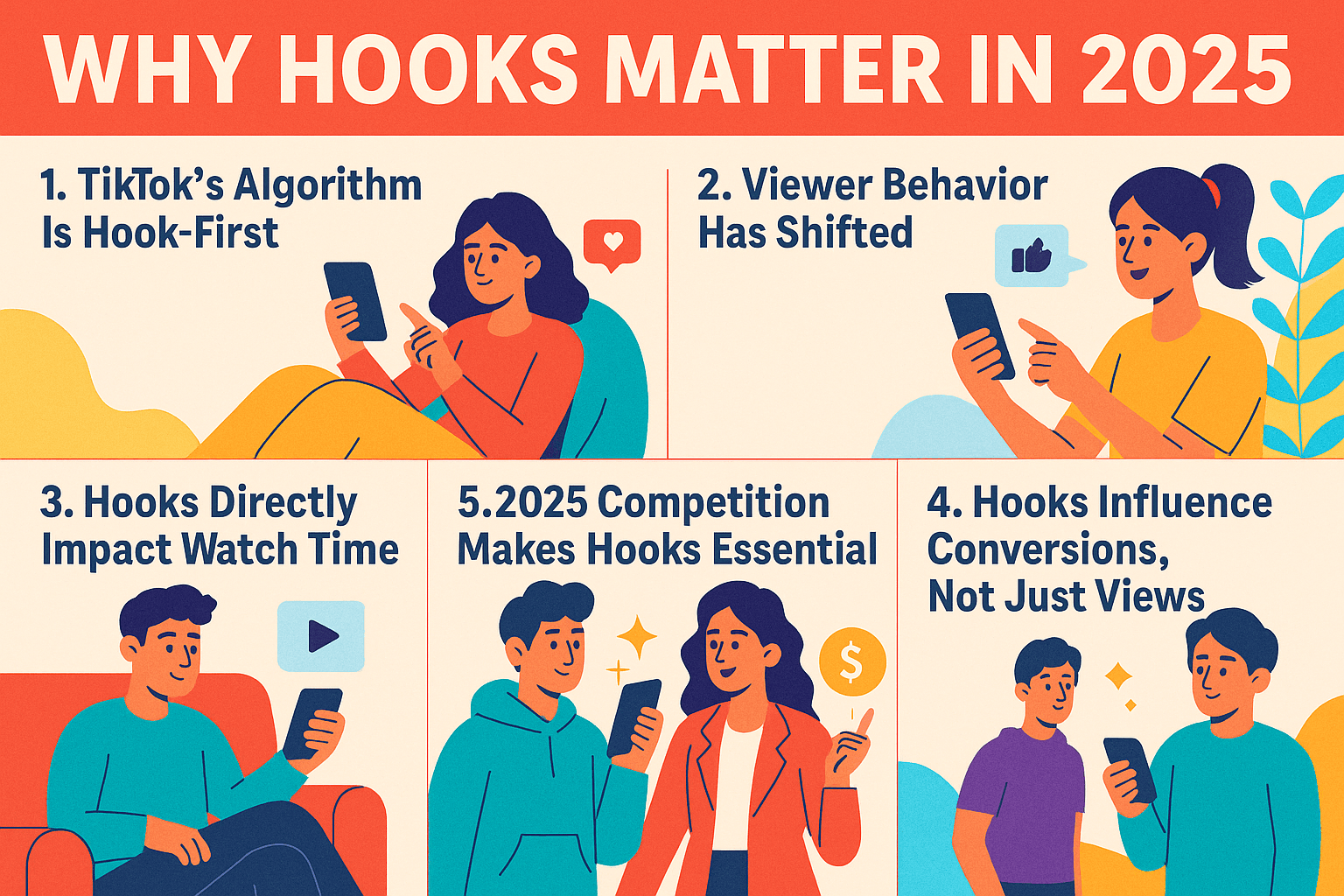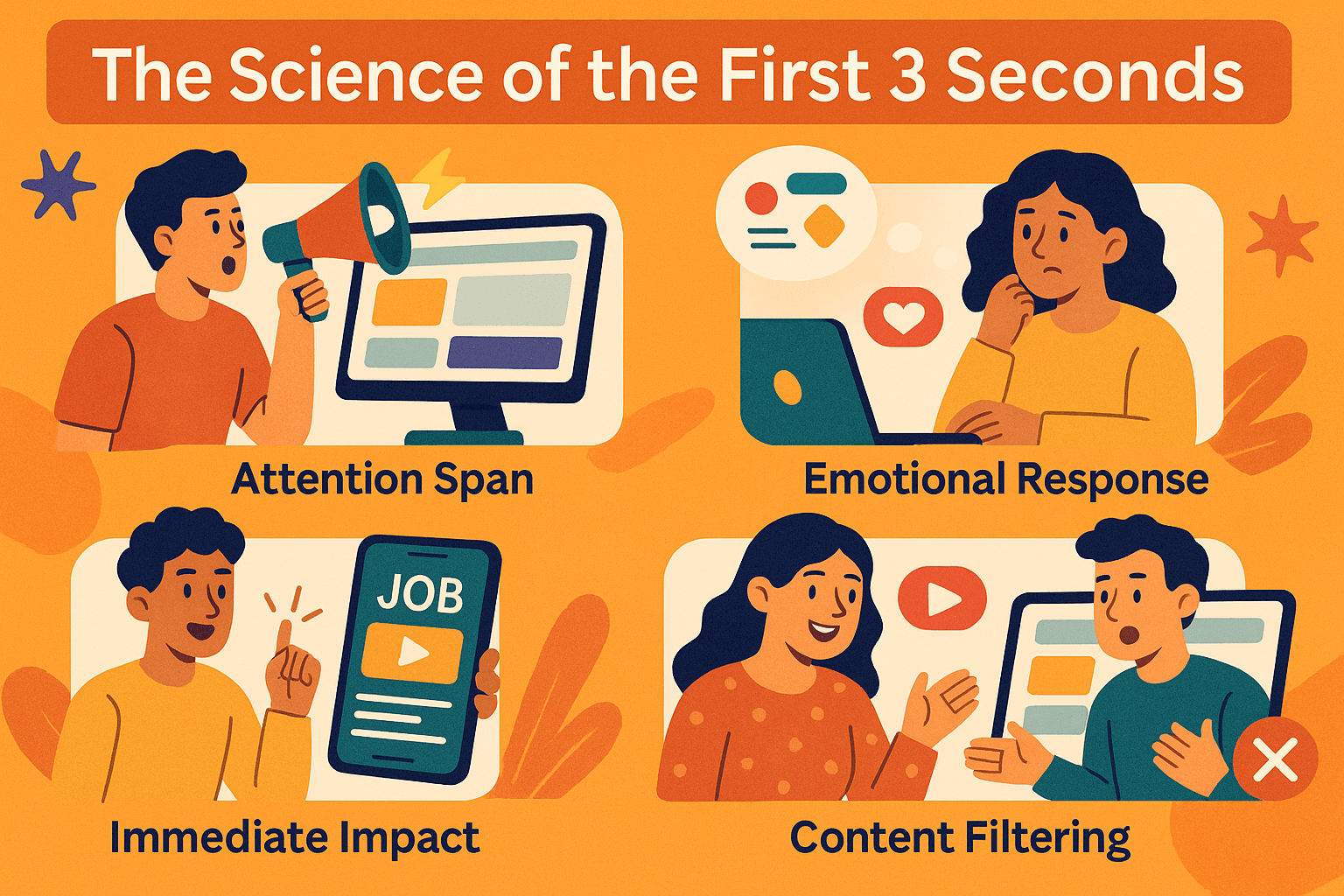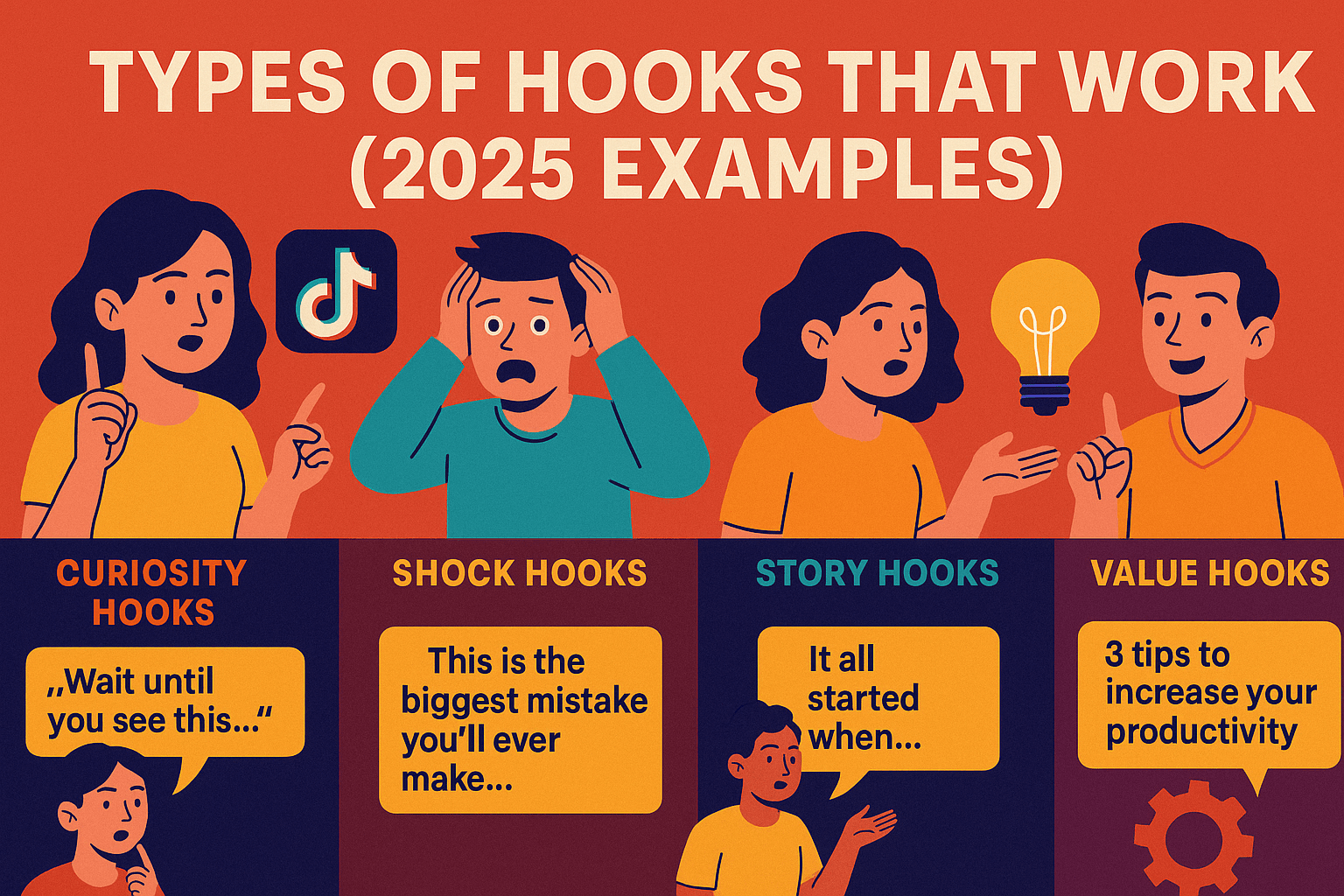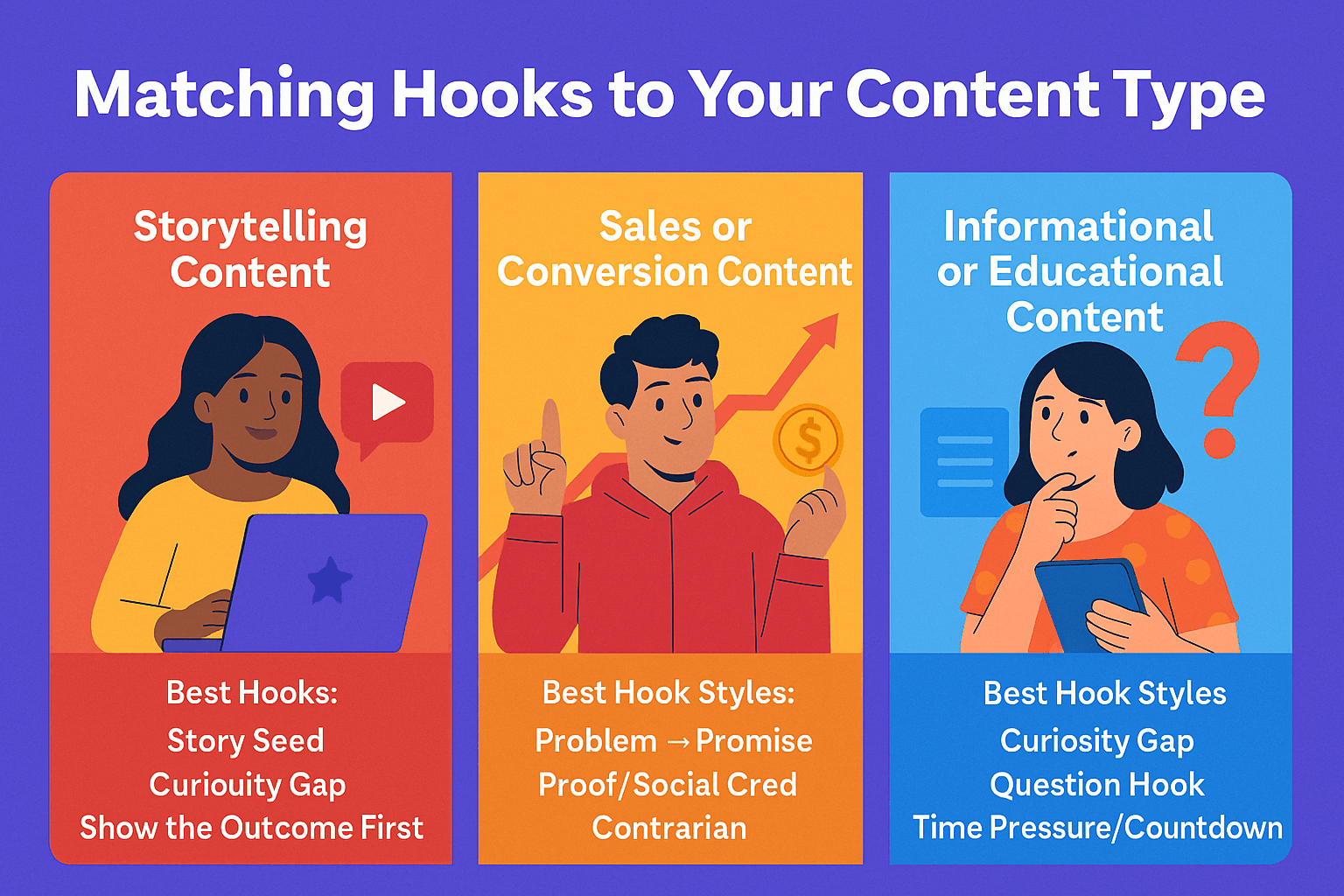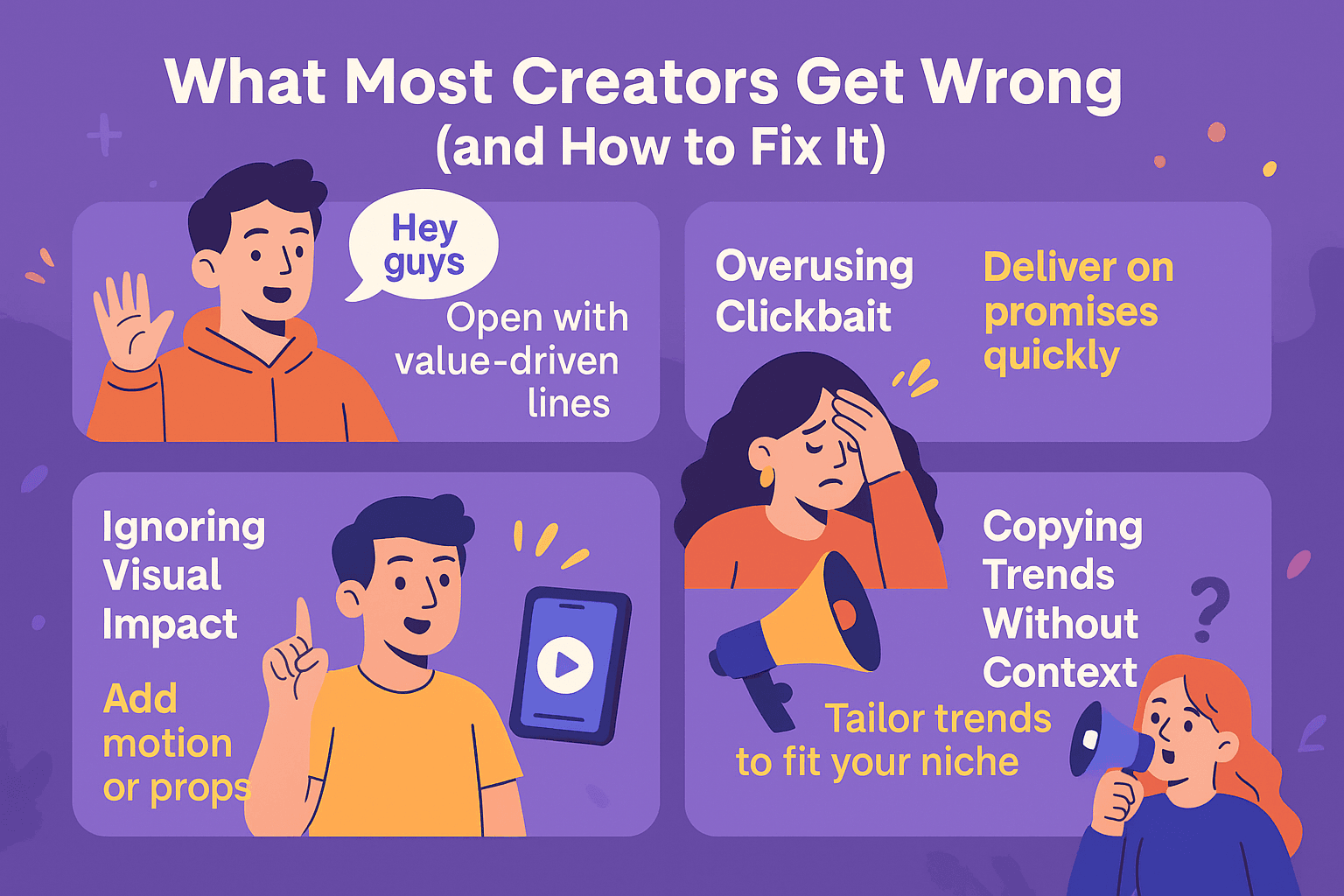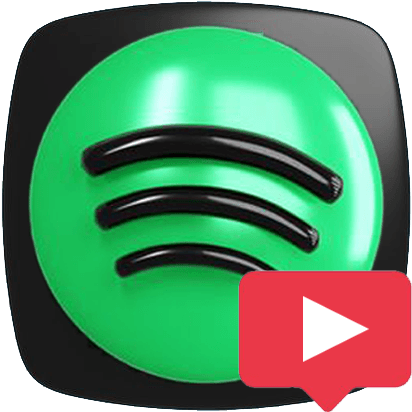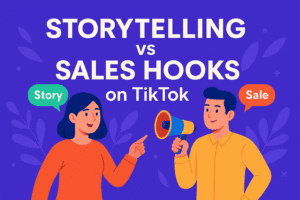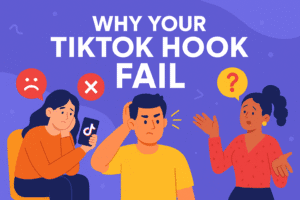Why Hooks Matter in 2025
The TikTok feed in 2025 is a battlefield of attention. With over 1 billion daily active users and thousands of new videos uploaded every second, TikTok has sharpened its algorithm to filter winners from losers in the very first few seconds.
Here’s why the hook — your opening 3 seconds — matters more than ever:
TikTok’s Algorithm Is Hook-First
- TikTok now measures early retention (the number of people who stay past the 3-second mark) as a primary ranking factor.
- If your hook fails, the algorithm throttles distribution before your video has a chance to reach a bigger audience.
- In 2025, scroll speed detection is built into the algorithm: if people swipe away too quickly, TikTok assumes your video isn’t engaging.
Viewer Behavior Has Shifted
- Attention spans are shrinking. Gen Z and Gen Alpha expect instant stimulation, not long setups.
- Most users decide whether to stay or scroll in less than 2.7 seconds.
- Strong hooks reduce “thumb fatigue” and force viewers to pause — a signal TikTok interprets as relevance.
Hooks Directly Impact Watch Time
- The hook sets the tone for average watch duration — a core metric for virality.
- Videos with compelling hooks show up to 40% higher watch time, according to case studies from top creators.
- More watch time → higher completion rate → stronger algorithm boost → more likes.
Hooks Influence Conversions, Not Just Views
- For businesses and creators, a good hook doesn’t just increase visibility — it guides intent.
- Example: A storytelling hook builds trust; a problem/solution hook drives sales; a curiosity hook boosts engagement.
- Without a strong hook, even great offers or messages go unnoticed.
2025 Competition Makes Hooks Essential
- TikTok is oversaturated with trends, sounds, and effects.
- The only way to stand out is to capture attention before your competitors do.
- Think of your hook as your “ad headline” — it’s what decides whether people engage or ignore.
TikTok’s 2025 growth equation starts with hooks.
- No matter how polished your video is, a weak opening = wasted effort.
But a scroll-stopping hook can turn even simple videos into viral hits — and directly boost your likes, followers, and sales.
The Science of the First 3 Seconds
On TikTok in 2025, success is scientifically measurable — and it all starts in the first three seconds. That tiny window doesn’t just decide whether a viewer keeps watching; it dramatically determines whether your video reaches thousands… or dies quietly after a few dozen plays.
TikTok’s algorithm is now laser-focused on early watch signals. Every swipe, pause, or exit within the first three seconds sends powerful data to TikTok’s ranking system. Let’s break it down:
Impressions → Retention → Distribution
- TikTok consistently tests every video with a small sample group on the For You Page.
- If more than 70% of users remain past the 3-second mark, the system interprets your video as engaging and dramatically increases distribution.
- But if fewer than 50% stay, TikTok immediately throttles reach — sometimes preventing your video from even hitting 500 views.
- In other words, your hook alone can determine whether you go viral or vanish.
Micro Watch-Time Signals
- TikTok doesn’t just measure completion rate at the end. It measures micro-retention checkpoints at 1s, 3s, 5s, and 10s.
- The 3-second checkpoint is the most critical because it tells TikTok whether people actually gave your video a chance.
- Creators who consistently pass the 3-second retention test report a surprisingly higher chance of hitting 10K+ views, even with average editing or production quality.
- Fail here, and the algorithm labels your video as weak content — no matter how good the rest is.
Hook Style Impacts Watch Time Curve
- Curiosity hooks (“Wait until you see this…”) often gradually extend watch duration because people wait for the payoff.
- Shock hooks (“This mistake is ruining your TikTok growth…”) grab instant attention but can dangerously collapse if you don’t deliver quickly.
- Storytelling hooks (“It all started when…”) consistently maintain higher watch times because viewers want narrative closure.
- TikTok’s data shows that videos with structured storytelling hooks often double their average watch duration compared to generic intros.
Engagement Is Directly Tied to Early Retention
- Watch time directly fuels engagement: people who stay longer are far more likely to hit like, drop a comment, or share.
- TikTok dramatically boosts videos where likes, comments, or shares happen in the first 10 seconds.
- Tests show that creators who optimized their hooks saw up to 3x more likes and 2x more shares, even when their overall video length stayed the same.
Algorithm’s New “Skip Penalty” in 2025
- In 2025, TikTok introduced an even stricter penalty: if users swipe away before the 3-second mark, TikTok assumes your video is irrelevant to that audience.
- Too many skips = your content enters what creators call “view jail” — where distribution flatlines, no matter how often you post.
- The only escape? Crafting hooks that consistently prevent skips and signal “keep watching” to the algorithm.
Your first 3 seconds are more important than your next 30.
- Without a strong hook, TikTok’s algorithm quietly buries your content. But with a hook that immediately earns retention and engagement, you unlock the viral loop: more views → more likes → more reach → faster growth.
Types of Hooks That Work (2025 Examples)
Hooks are no longer optional in 2025. The right hook style doesn’t just increase watch time — it shapes engagement, boosts likes, and determines whether the TikTok algorithm rewards your content. Test multiple hook formats, track retention data, and refine until you find which approach consistently drives results.
1. Curiosity Gap (Open-Loop)
- Best for: Education, tutorials, before/after reveals.
- Why it works: Creates a knowledge gap the brain wants to close, boosting retention past the first 3 seconds.
- Examples:
- “Most people get this one thing wrong about TikTok growth…”
- “Watch what happens when I change just this in the first 3 seconds.”
Tip: Always deliver the payoff within 8–10 seconds or risk losing viewers. This is the truth about TikTok Hook and Payoff Format that Proven Strategy to Boost Watch Time in 2025
2. Contrarian or Shock
- Best for: Myth-busting, hot takes, attention resets.
- Why it works: Violates expectations, which stops scrolling.
- Examples:
- “Hashtags aren’t the problem. Your first 3 seconds are.”
- “Buying followers isn’t what kills reach — bad hooks do.”
Tip: Avoid pure clickbait. If you shock, explain the “why” quickly.
3. Story Seed (Micro-Narrative)
- Best for: Case studies, personal branding, behind-the-scenes.
- Why it works: Human brains crave narrative closure, which extends watch time.
- Examples:
- “It started with a video that got 97 views… then I changed my first 3 seconds.”
- “A client asked me to fix this TikTok… here’s the before vs after.”
Tip: Set stakes immediately. Don’t let the intro ramble.
4. Problem → Promise
- Best for: BOFU offers, services, sales-driven content.
- Why it works: Reflects the audience’s pain point and promises a fast solution.
- Examples:
- “Low likes? Fix your first 3 seconds with this template.”
- “If your views cap at 200, try this opening line.”
Tip: Make the promise concrete, not vague.
5. Visual Pattern Interrupt
- Best for: DIY, food, beauty, fitness, and edits.
- Why it works: Motion or unusual framing hooks attention even before audio starts.
- Examples:
- Hand covering the lens → quick reveal + caption.
- Start mid-action, like pouring, tossing, or unboxing.
Tip: Don’t over-edit. Keep the topic visible.
6. Proof or Social Credibility
- Best for: Tutorials, authority building, credibility.
- Why it works: Stats or social proof reduce doubt and prime viewers to trust.
- Examples:
- “We grew this account from 187 to 12,400 with one hook change.”
- “Three accounts used this and all broke 1k likes.”
Tip: Always show context (timeframe, method).
7. Show the Outcome First
- Best for: Transformations, tutorials, recipes, fitness.
- Why it works: Inverts the order — payoff comes first, explanation follows.
- Examples:
- Show final look or result immediately: “Want this? Here’s the exact first 3 seconds we used.”
Tip: Keep the rewind fast; don’t stall after the reveal.
8. Time Pressure / Countdown
- Best for: Lists, hacks, product showcases.
- Why it works: Scarcity and countdowns create urgency and rhythm.
- Examples:
- “You’ve got 3 seconds to decide if this hook is good. Ready?”
- “Five hooks you can steal today — counting down.”
Tip: Start the count instantly. Don’t preface with fluff.
9. Question Hook
- Best for: Engagement farming, niche communities.
- Why it works: Pulls viewers into a conversation and triggers comments.
- Examples:
- “Creators: which intro gets you to stay longer — A or B?”
- “Brands: which opener converts better for you right now?”
Tip: Keep questions specific; avoid vague or broad asks.
10. Sound-Driven Hook
- Best for: Comedy, trends, dances, remixes.
- Why it works: Familiar audio attracts attention; the twist keeps people watching.
- Examples:
- Use a trending sound but pair it with unexpected visuals.
- Add on-screen text promising value within 1–2 seconds.
Tip: Don’t rely only on the sound. If it’s muted or banned, the video dies.
Matching Hooks to Your Content Type (Story, Sale, Info)
One of the biggest mistakes creators make is thinking that any hook works for any video. In reality, the best-performing TikToks in 2025 match their hook style to their content type. When the hook aligns with the video’s purpose, viewers stay longer, likes increase, and the algorithm rewards you.
Here’s how to map the right hook to your content type:
Storytelling Content
Examples: Behind-the-scenes looks, “day in the life,” personal journeys, brand origin stories, case studies.
Best Hook Styles:
- Story Seed: “It all started when…”
- Curiosity Gap: “Most people miss this one small detail…”
- Show the Outcome First: Show the final transformation, then rewind.
Why It Works: Stories tap into emotional connection. People watch because they want closure — they want to see how it ends. By hinting at the ending in the hook, you create tension that keeps them watching.
Pro Tip: Layer in captions that guide the narrative (e.g., “Day 1 → Day 7”). Even if someone scrolls with the sound off, they can follow your story.
Example in Action:
- A fitness coach starts with “This is me failing my first 10 pushups…” → then shows the Day 30 transformation.
- A business creator opens with “My first TikTok got 23 views… here’s how I hit 100k in 3 months.”
Sales or Conversion Content
Examples: Selling a service, promoting a product, affiliate marketing, or brand partnerships.
Best Hook Styles:
- Problem → Promise: “Struggling to get past 200 views? Fix it in your first 3 seconds.”
- Proof / Social Cred: “We grew this account from 187 to 12,400 with one hook change.”
- Contrarian / Shock: “Buying followers isn’t the problem — bad hooks are.”
Why It Works: Viewers who are close to buying don’t want fluff — they want solutions and proof. These hooks call out a pain point, then immediately frame your content as the fix.
Pro Tip: Flash numbers or visuals right away (e.g., growth charts, before/after screenshots). Concrete proof converts better than promises.
Example in Action:
- A service seller starts with “We tested 10 hook formulas, and only 2 worked. Here’s the one that tripled engagement.”
- A creator promoting a course opens with “Most people think posting more gets you views. That’s wrong — here’s what works.”
Informational or Educational Content
Examples: Tutorials, tips, trend explainers, algorithm breakdowns.
Best Hook Styles:
- Curiosity Gap: “Want to know why your TikToks keep dying at 200 views?”
- Question Hook: “Do hashtags even matter on TikTok anymore?”
- Time Pressure / Countdown: “3 hooks you can steal today (counting down).”
Why It Works: Audiences watching informational content want clear, quick value. A hook that makes them curious or promises an actionable list signals that they’ll get something useful fast.
Pro Tip: Use numbers and lists in your hook — e.g., “3 TikTok hooks that still work in 2025.” Structured value increases saves and shares.
Example in Action:
- A tutorial creator starts with “Your captions aren’t broken. Your hooks are. Here are 3 you should try.”
- A growth strategist opens with “This one hook style doubled watch time last week — and here’s why.”
What Most Creators Get Wrong (and How to Fix It)
Even in 2025, most TikTok creators are still failing their first 3 seconds — and the results are painfully predictable: low watch time, capped views, and almost no likes. Here are the most common mistakes and how to fix them:
1. Using Weak, Generic Intros
- Mistake: Starting videos with “Hey guys” or long intros that give no reason to stay.
- Why it Fails: The viewer’s brain decides in less than 2.5 seconds whether your video is worth it. Empty greetings waste that time.
- Fix: Replace “Hi, welcome back” with a value-driven first line:
- Bad: “Hey guys, I wanted to talk about TikTok growth today…”
- Good: “If your TikToks keep dying at 200 views, here’s why.”
2. Overusing Clickbait
- Mistake: Teasing shocking results but never delivering (or delivering too late).
- Why it Fails: TikTok’s algorithm detects early drop-offs and punishes videos where people swipe away after realizing they’ve been misled.
- Fix: Use curiosity responsibly. Deliver the promised value within the first 8–10 seconds. Example: If you say “This one trick doubled my likes,” show the before/after screenshot immediately, then explain.
3. Ignoring Visual Impact
- Mistake: Starting with a blank wall, static shot, or talking head with no motion.
- Why it Fails: TikTok is a motion-first platform. Static visuals look like ads and get scrolled past.
- Fix: Add a pattern interrupt right away:
- Movement (hand gesture, zoom, transition)
- Prop (phone, notebook, product, overlay text)
- Action (pouring, unboxing, sketching)
4. Copying Trends Without Context
- Mistake: Using trending hooks or sounds just because they’re popular, but without tailoring them to your niche.
- Why it Fails: TikTok rewards relevance + retention, not just trend hopping. Generic trend copies blend into the feed.
- Fix: Always add a niche-specific twist. For example, instead of repeating a trending line word-for-word, adapt it:
- Trend: “You’re probably wondering how I got here…”
- Niche Twist: “You’re probably wondering how my TikTok went from 200 views to 20,000 in 3 days.”
5. Forgetting the Algorithm’s New Skip Penalty
- Mistake: Assuming that one bad hook won’t hurt overall growth.
- Why it Fails: In 2025, TikTok’s skip penalty is stricter: repeated early exits signal your content isn’t engaging, making future videos harder to rank.
- Fix: Audit your first 3 seconds on every video. If watch time drops before the 3-second checkpoint, rewrite or reshoot the hook. Treat it as non-negotiable.
Quick Hook Fix Checklist
- Open with value, proof, or curiosity, never fluff.
- Show movement or visuals right away.
- Use trends as a frame, not a crutch — always adapt them.
- Deliver on your promise within 8–10 seconds.
- Track your 3-second retention rate in TikTok Analytics and adjust.
Most creators fail because they treat hooks as decoration. But in reality, hooks are the algorithm’s entry ticket. Fix them, and everything else — watch time, likes, comments, shares — rises with it.
Want More Likes?
Hooks are the engine that fuels TikTok growth. But even the best hooks sometimes need a push to break through the noise. That’s where social proof signals come in.
If you’re ready to give your next video a boost, start by pairing strong hooks with real TikTok likes from SMMNut’s TikTok Likes Service.
- Safe, fast delivery
- Works with TikTok’s 2025 algorithm updates
- Helps your best hooks get the attention they deserve
Don’t let a great video die in the feed. Boost your likes today and let the algorithm carry you further.
TikTok in 2025 is brutally competitive — but the winners all have one thing in common: they master the first 3 seconds. From curiosity-driven story hooks to proof-packed sales intros, the right opening line doesn’t just grab attention — it drives watch time, engagement, and likes.
By matching your hook style to your content type, avoiding common mistakes, and combining organic performance with smart boosts, you create a growth system that consistently beats the scroll.
Remember: your hook is the difference between a video that gets skipped and one that gets shared. Master it, and TikTok’s algorithm does the rest.

